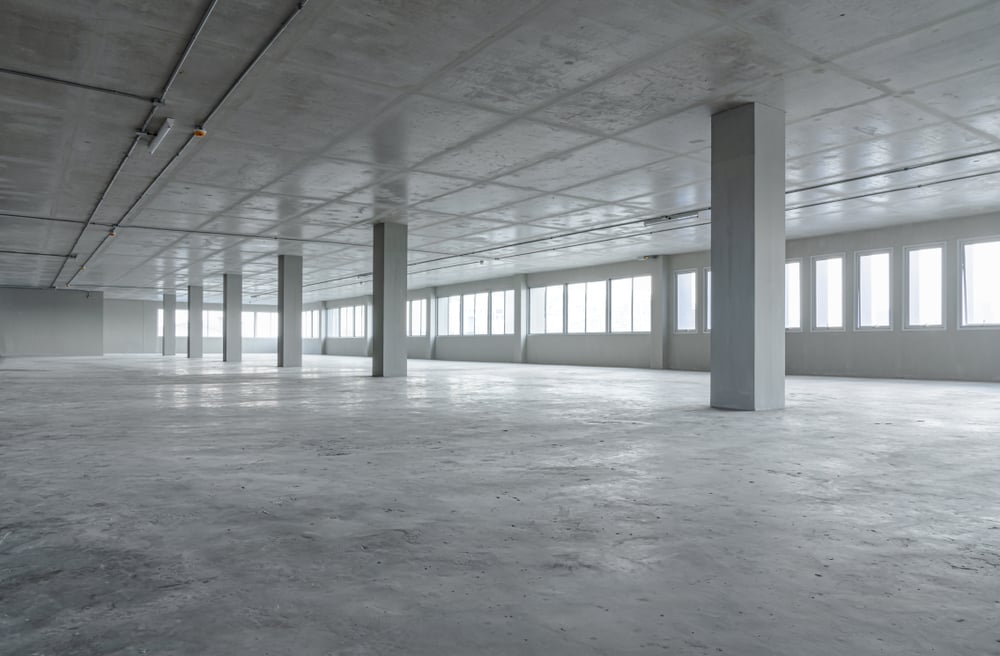Repurposing Department Stores into Micro-Fulfillment Centers

As we discussed in a previous article, the year 2020 was challenging for the commercial real estate sector. Many employees were sent to work from home in response to COVID-19 lockdowns, drastically reducing the demand for office space. At the same time, physical stores were closed and replaced with e-stores, driving growth in the e-commerce sector.
These trends have been covered by industry studies, which provide a picture of how the commercial real estate sector could evolve in the near future. A study by eMarketer found that global retail sales decreased by 3.0% in 2020, but the global e-commerce sector grew by 27.6%. Another study by Deloitte Insights analyzed how funds from operations (FFO) changed between 2Q2019 and 2Q2020 in the commercial real estate sector:
- The most affected sector was lodging and resorts, with a drop of 173.9%.
- Retail was the second-most-affected sector, with a 26.8% drop in FFO.
- On the other hand, data centers had an increase of 18.1%, while industrial real estate had an increase of 11.2%.
Commercial real estate developers should consider this trend when planning their projects, and take advantage of it. In particular, vacant properties with department stores and other retail spaces could be repurposed for micro-fulfillment centers. They can offer the same services as a typical fulfillment center, but closer to the customer and faster, while using much less space.
Are you planning to repurpose retail spaces for micro-fulfillment? Get a professional MEP design.
Using Commercial Spaces More Efficiently

When repurposing commercial spaces for industrial use, the layout and available area are among the main limitations. Shopping malls are divided into individual stores, while manufacturing plants and industrial warehouses are typically open spaces. However, micro-fulfillment technology can reduce the space needed for product storage and retrieval.
Micro-fulfillment centers have become possible in great part thanks to robotics. Their compact design allows storage racks to be spaced much more closely, while their speed allows orders to be processed much more efficiently. Space is used 4 times more efficiently, and a given staff can complete 10 times more orders in the same time, according to AutoStore.
Many warehouse automation solutions are modular, which means they can also adapt to the space available. For a developer who plans to repurpose commercial property, this means less modifications to the existing layout. Adapting to the spaces between walls and columns is not a problem when micro-fulfillment technology uses a modular design.
Reducing the Cost of Commercial Repurposing Projects

A conventional fulfillment center needs abundant lighting, battery charging stations for forklifts, and other installations that are not normally found in department stores. However, micro-fulfillment centers don’t depend on high levels of lighting or heavy equipment, thanks to the use of robots. Converting a department store into a conventional fulfillment center requires more changes to MEP installations, compared with a micro-fulfillment center.
- Robots consume less power than forklifts and other traditional forklift equipment.
- Robots do not have the visibility needs of human workers, also saving on lighting.
When a commercial building is repurposed for industrial use, the required changes in electrical installations go beyond wiring and distribution boards. The project may also involve new transformers and service connections, which represent major expenses.
In the case of multi-story retail spaces that are repurposed, it can make sense to eliminate floors and deploy micro-fulfillment systems with tower configurations, like those provided by Urbx Logistics. With this technology, an area of 7,000 sq. ft. can be used to manage over 70,000 product containers, for example.
Combining Micro-Fulfillment Centers with Data Centers

The study by Deloitte Insights revealed a growing demand for both industrial spaces and data centers. In the case of e-commerce, both types of spaces are required by the same companies as they grow, and commercial buildings can be repurposed accordingly. Online retailers will be looking for suitable spaces to deploy two of their most critical operations, and finding them in the same facility is convenient.
Just like micro-fulfillment technologies, data centers have a modular design that adapts to the spaces available. This also offers scale flexibility, and both services can be expanded according to the growth of online retailers. Data centers can support not only e-commerce platforms, but also the micro-fulfillment centers themselves.
Having a reliable backup power system is critical in both cases. An online retailer can suffer major losses if their e-commerce platform or one of their fulfillment centers go offline. When repurposing groups of commercial buildings, the reliability of their power supply can be improved by combining local energy resources into a microgrid.

Michael Tobias
Michael Tobias, the Founding Principal of NY Engineers, currently leads a team of 50+ MEP/FP engineers and has led over 1,000 projects in the US
Join 15,000+ Fellow Architects and Contractors
Get expert engineering tips straight to your inbox. Subscribe to the NY Engineers Blog below.



